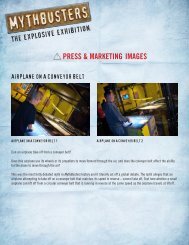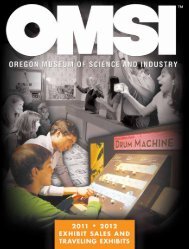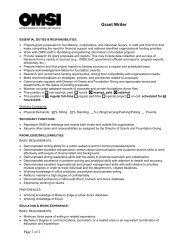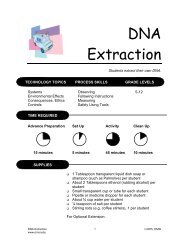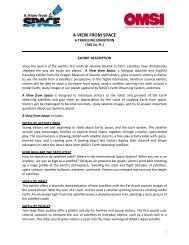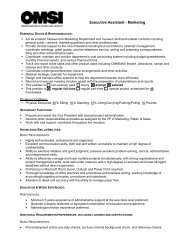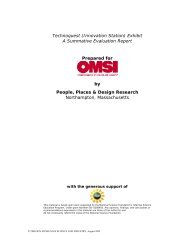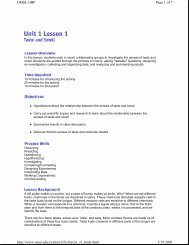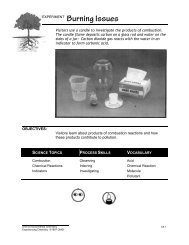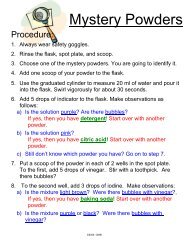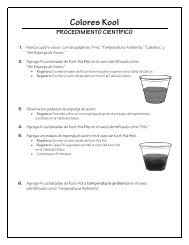ADRENALINE RUSH: THE SCIENCE OF RISK - Big Movie Zone
ADRENALINE RUSH: THE SCIENCE OF RISK - Big Movie Zone
ADRENALINE RUSH: THE SCIENCE OF RISK - Big Movie Zone
You also want an ePaper? Increase the reach of your titles
YUMPU automatically turns print PDFs into web optimized ePapers that Google loves.
PART 2 / FOR A BIGGER <strong>RUSH</strong> / LEONARDO DA VINCI: A TRUE RENAISSANCE MAN<br />
LEONARDO DA VINCI:<br />
Man<br />
A TRUE Renaissance<br />
Born on April 15, 1452 in Tuscany, Leonardo was the<br />
illegitimate son of notary Ser Piero, and a woman<br />
named Catarina. He moved to his father’s home in Vinci<br />
at the age of five before moving to Florence in 1460.<br />
After an apprenticeship at the workshops of famous<br />
craftsman and artist Verrochio, he moved to Milan in<br />
1482, first holding a position as a musician at the court<br />
of the duke of Milan, Ludovico il Moro.<br />
It is there that he began producing an impressive body<br />
of work, mostly as a painter, architect and military engineer.<br />
Although he left relatively few finished paintings,<br />
works like his Last Supper and the Mona Lisa are<br />
among the most famous in the world. His painted work<br />
also shows remarkable innovations in perspective and<br />
proportion, techniques which provide two-dimensional<br />
works with a realistic three-dimensional feel.<br />
As a true Renaissance person – a person showing mastery<br />
in a wide range of fields – he also contributed<br />
dozens of models and designs for machines and<br />
devices that were often well ahead of their times: a<br />
tank, a self-propelled car, a helicopter, a plane, a parachute,<br />
an odometer, and a number of cranes, architectural<br />
tools and hydraulic machines. His anatomical and<br />
botanical observations were also extremely precise and<br />
detailed, driven by the idea that all things were governed<br />
by a set of universal laws and principles.<br />
To pursue his art and his research, Leonardo da Vinci<br />
had to count on the generosity of noble patrons, a position<br />
which provided uneven security. When his first<br />
patron, Ludovico il Moro, was defeated by French<br />
armies in 1499, Leonardo had to wander from city to<br />
city, looking for new patrons and new commissions.<br />
After going back and forth between Florence, Mantua,<br />
Milan and Rome, he was named “first painter engineer<br />
and architect” to the King of France, François I, from<br />
1516 until his death in 1519.<br />
How did Leonardo manage to remain so creative and<br />
innovative throughout his life? Well, among other<br />
things, he was always exerting his imagination and his<br />
thoughts and constantly studying everything from<br />
geometry to geology, music, anatomy, botany, engineering<br />
and painting. In 1490, at the age of 38, he was still<br />
training in the Italian city of Pavia, learning more about<br />
architecture from another Renaissance artist and engineer,<br />
Francesco di Giorgio.<br />
Whether by reading, building theories, or observing<br />
nature –especially the flight of birds, which fills up an<br />
entire notebook – he sought to constantly expand his<br />
knowledge and his ability to find new solutions to the<br />
problems of his day. As shown by the 5,000 manuscript<br />
pages left by Leonardo, creativity and innovation are<br />
driven not only by a certain amount of risk-taking, but<br />
also by constant training, learning and trying.<br />
Further reading:<br />
http://www.museoscienza.org/english/leonardo<br />
The Leonardo da Vinci Gallery is one of the main attractions of the<br />
National Museum of Science and Technology in Milan, Italy. The same<br />
can be said for the Leonardo section of their web site, which features<br />
original drawings and photographs of scale models of Leonardo’s<br />
machines, information about and pages from his many manuscripts, and<br />
an extensive series of links.<br />
http://www.mos.org/sln/Leonardo/LeoHomePage.html<br />
Boston’s Museum of Science has created a whole section of its web<br />
site to Leonardo, including a number of classroom activities.<br />
http://galileo.imss.firenze.it/news/mostra/6/<br />
The Istituto e Museo di Storia della Scienza (Institute and Museum of<br />
Science History) in Florence, Italy, has a some interesting information<br />
about Leonardo’s role as an Innovative Engineer of the Renaissance.<br />
19



